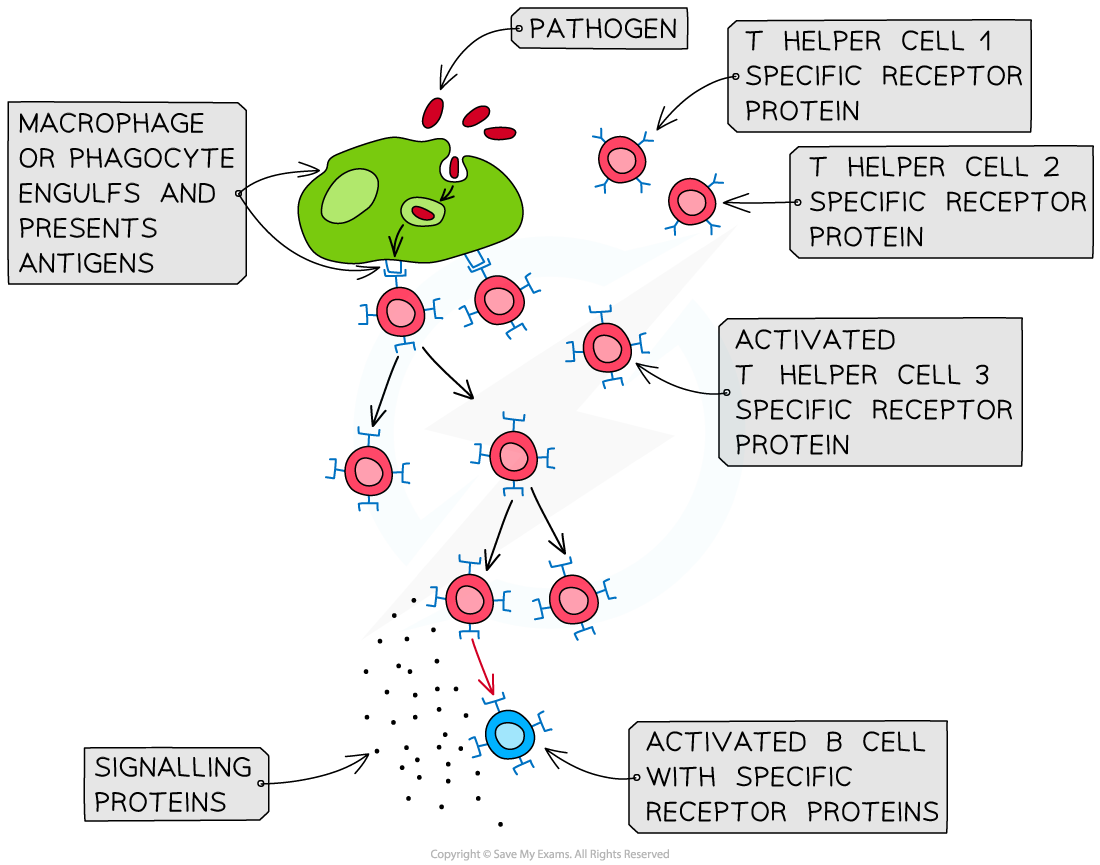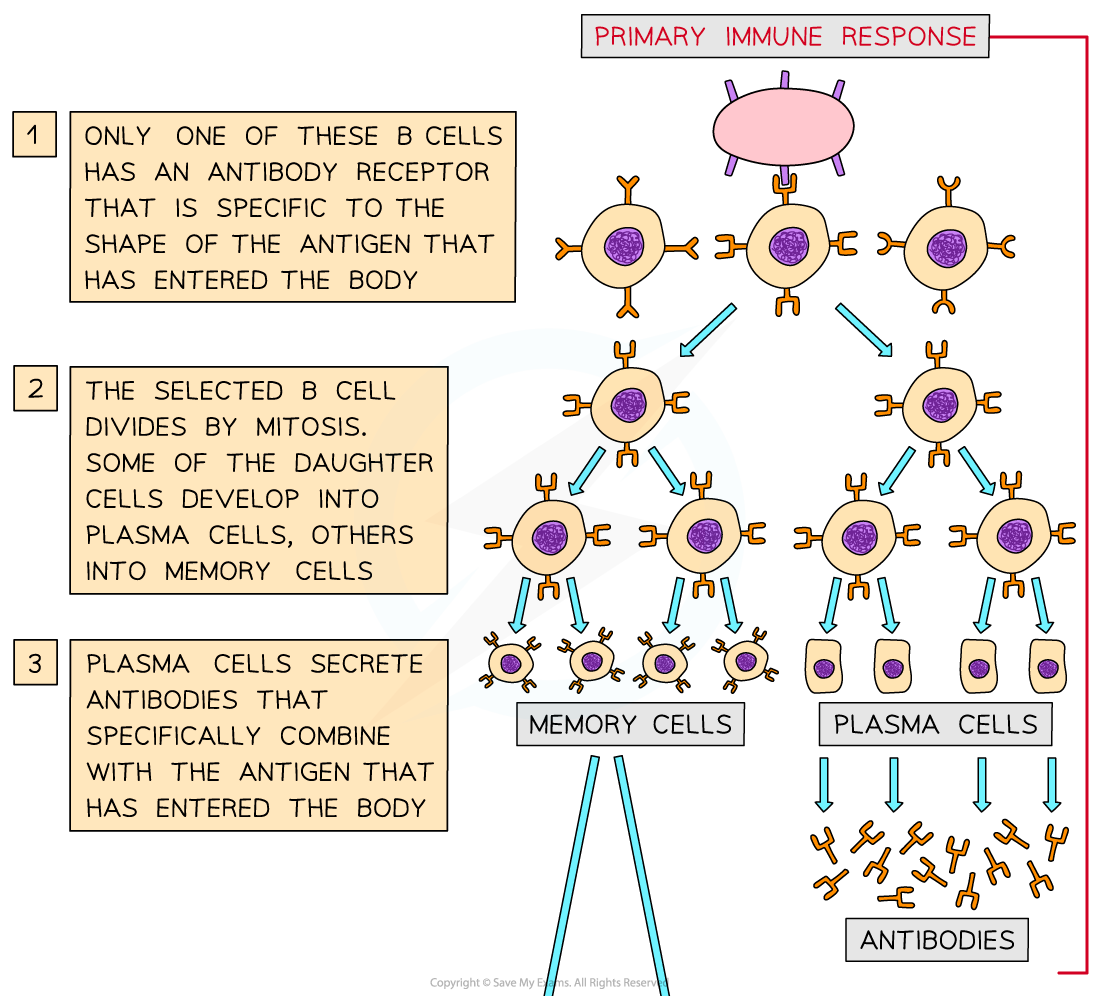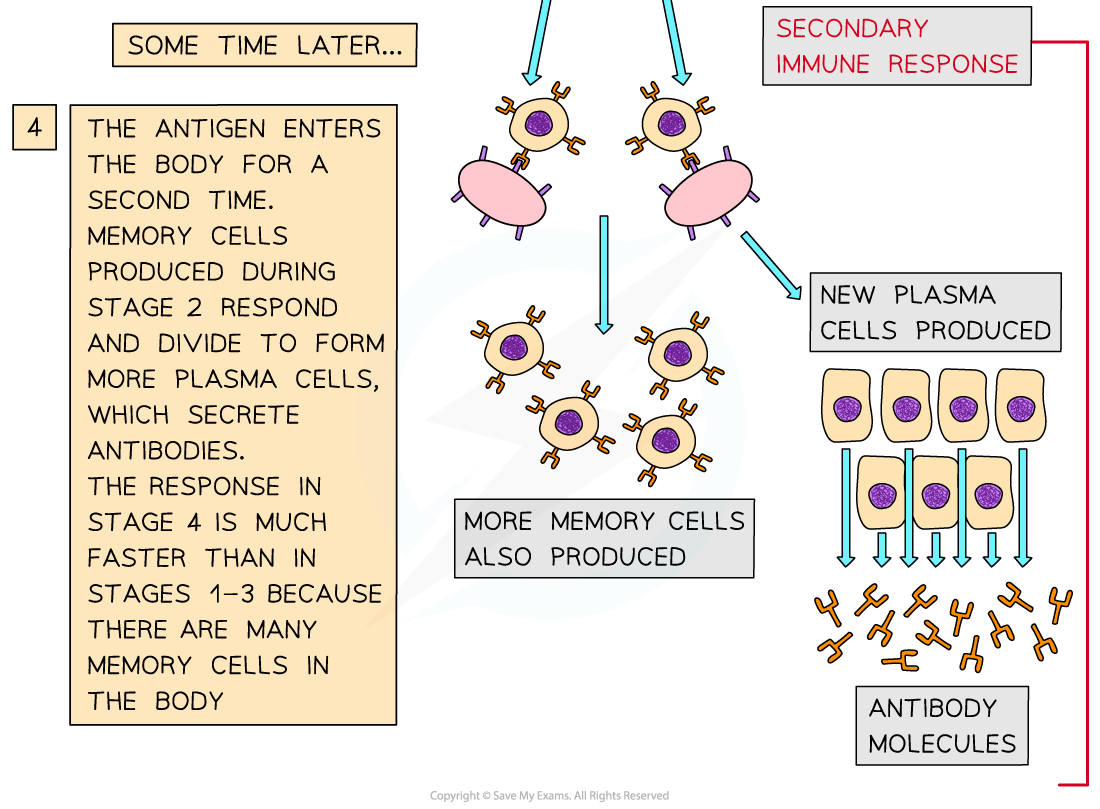Specific Immune Response
- T-Helper cells (a type of lymphocyte that responds to specific antigens) and mature B cells (another type of lymphocyte) have specific receptors located on their cell surface membranes
- These receptors have a similar structure to antibodies and are each specific to one antigen
- Note that lymphocytes are a type of white blood cell involved in the specific immune response; there are several different types of lymphocyte
- When phagocytes engulf pathogens, they present the pathogen antigens on their own cell surface membrane
- A cell with non-self antigens on its surface membrane is known as an antigen presenting cell
- The T-helper cell with the complementary receptor proteins to the antigen will bind to the antigen and become activated by the phagocyte
- Activated T-helper cells then bind with complementary receptors on the surface membrane of specific B-lymphocytes
- On binding, the T-helper cells releases signalling proteins and activate these B-cells

Antigens activate complementary T-helper cells which go on to activate complementary B-cells
Plasma Cells
- During an immune response, B-lymphocytes mature to form two types of cell: plasma cells and memory cells
- Plasma cells produce large volumes of antibodies specific to the single type of antigen that triggered the immune response
- The cells are specialised with large amounts of rough endoplasmic reticulum which promotes protein synthesis to make the required antibodies
- As B-cells only produce one type of antibody, only a small proportion of the genes are expressed in the nucleus
Clonal Selection & Expansion
- Clonal selection involves identifying and activating a B-cell with the complementary receptor to the target antigen
- Clonal expansion can then occur
- The activated B-cell divides by mitosis to create many clones of itself
- Each clone will produce the exact same antibody, complementary to the target antigen
- The activated B-cell divides by mitosis to create many clones of itself
- Some of these mature B-lymphocytes differentiate into plasma cells
- The other B-lymphocytes become memory cells that remain and circulate in the blood
- Whilst the antibodies produced by the plasma cells are only present for a matter of weeks or months, memory cells form the basis of immunological memory – the cells can last for many years and often a lifetime
The primary and secondary immune response
-
- A primary immune response occurs in response to a newly encountered antigen
- This is a relatively slow response as the immune system takes time identifying the complementary antibody for each new antigen it encounters
- The infection may result in symptoms being presented whilst the immune system identifies and manufactures the correct antibodies
- Secondary immune response in response to a previously encountered antigen
- The memory cells with the correct antibody, are already circulating in the blood so the response is more rapid, producing more antibodies than the primary response, in a much shorter time frame
- Symptoms do not develop as the pathogen can be destroyed before significant cell damage occurs
- A primary immune response occurs in response to a newly encountered antigen


During a secondary immune response, memory cells that remained in the blood divide very quickly into plasma cells (to produce antibodies) and more memory cells. Whereas a primary response occurs much more slowly.
